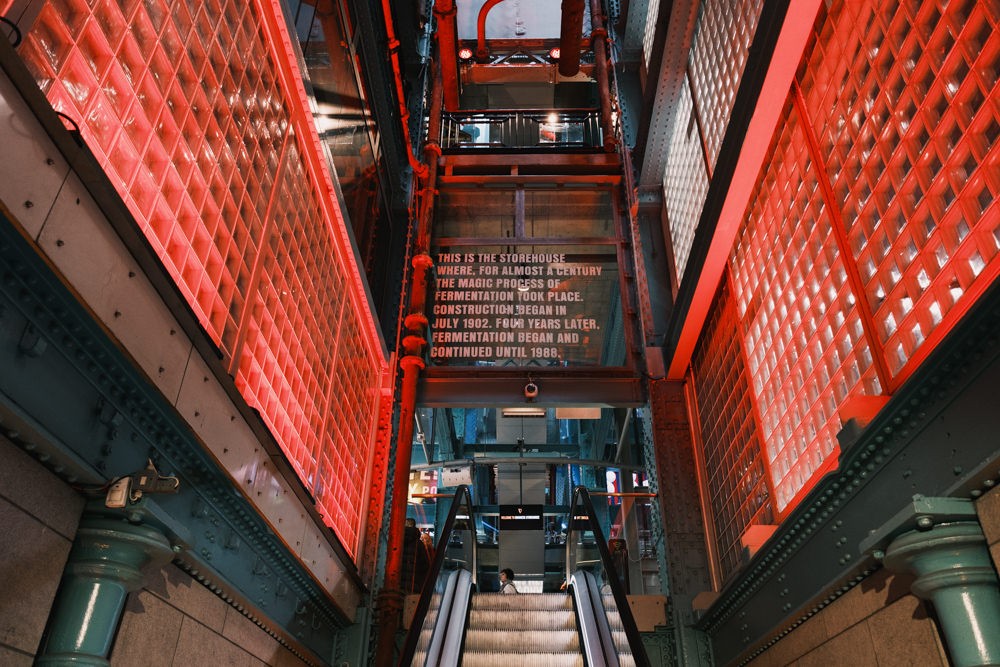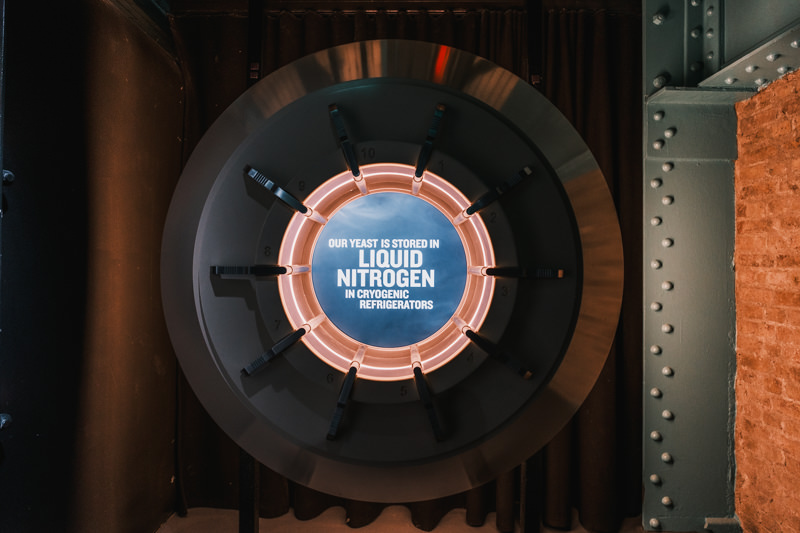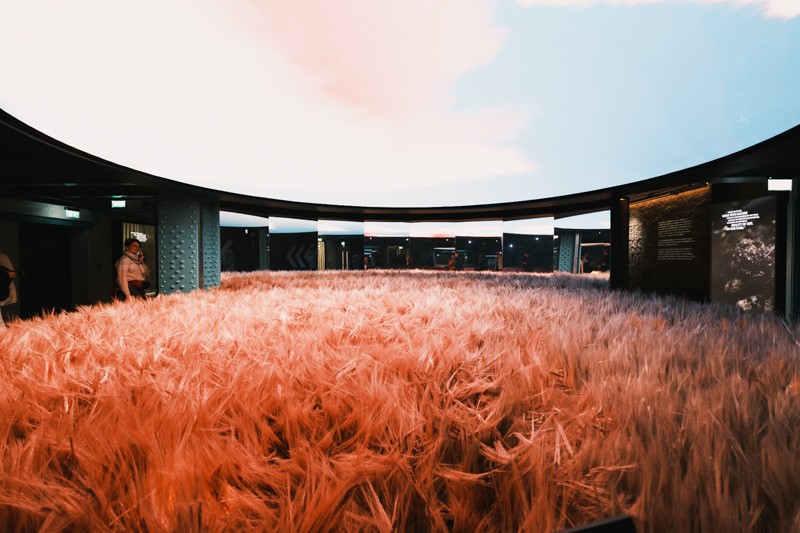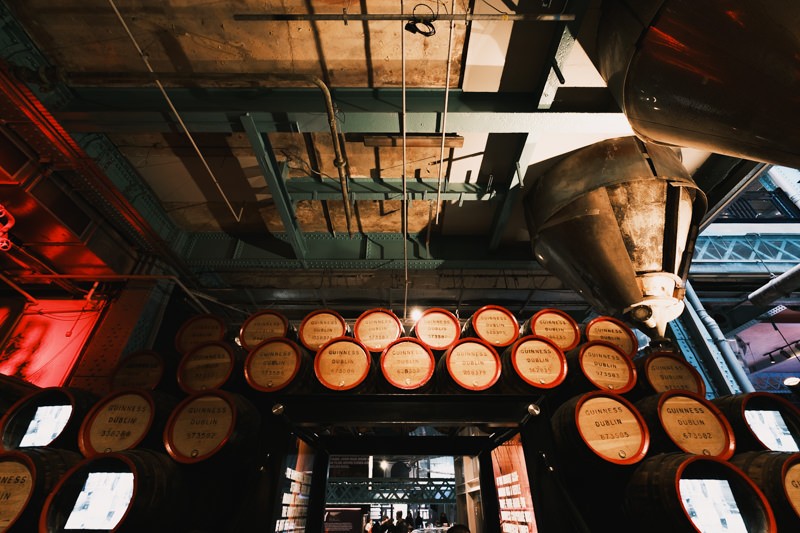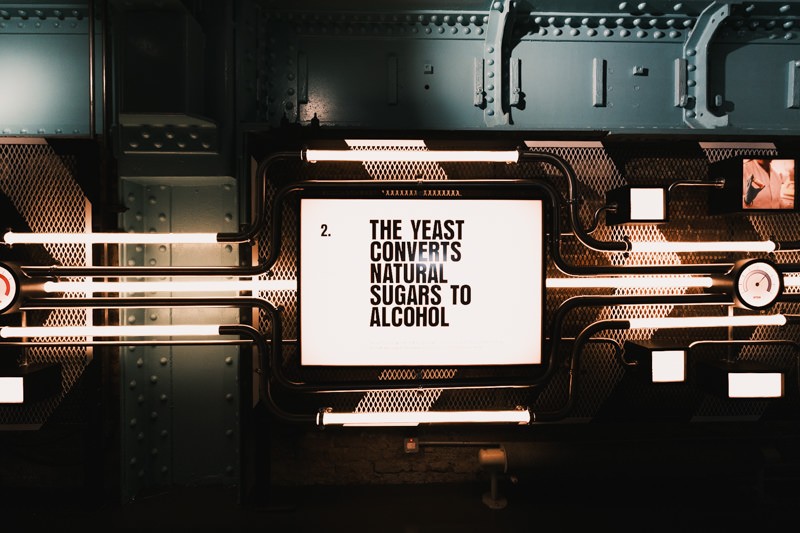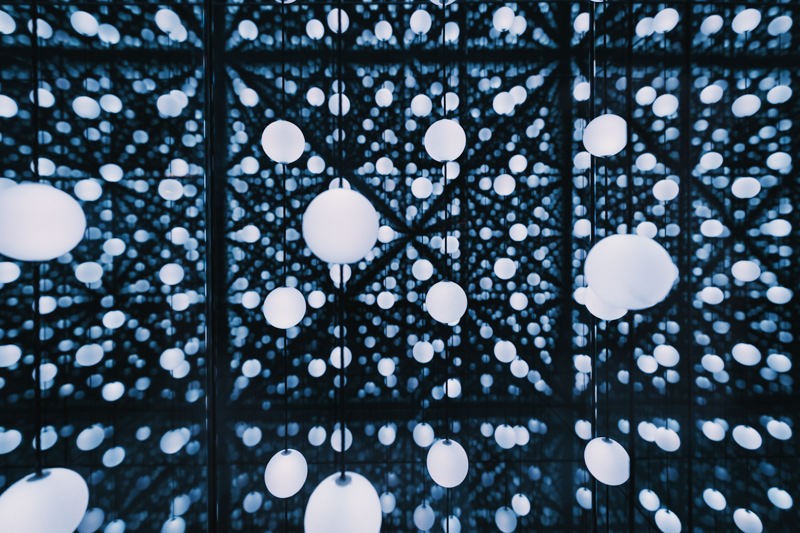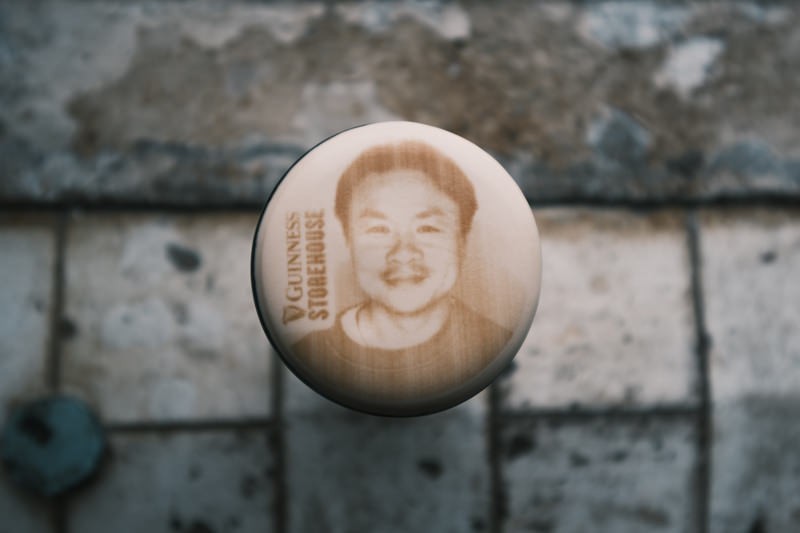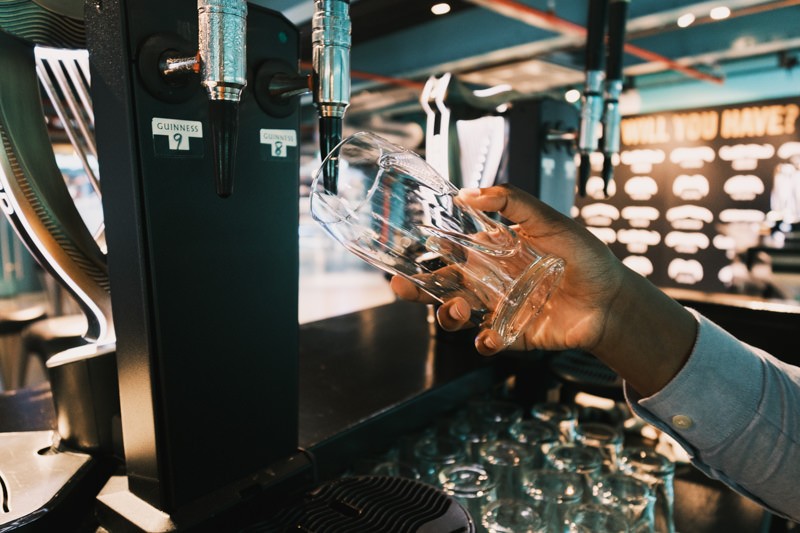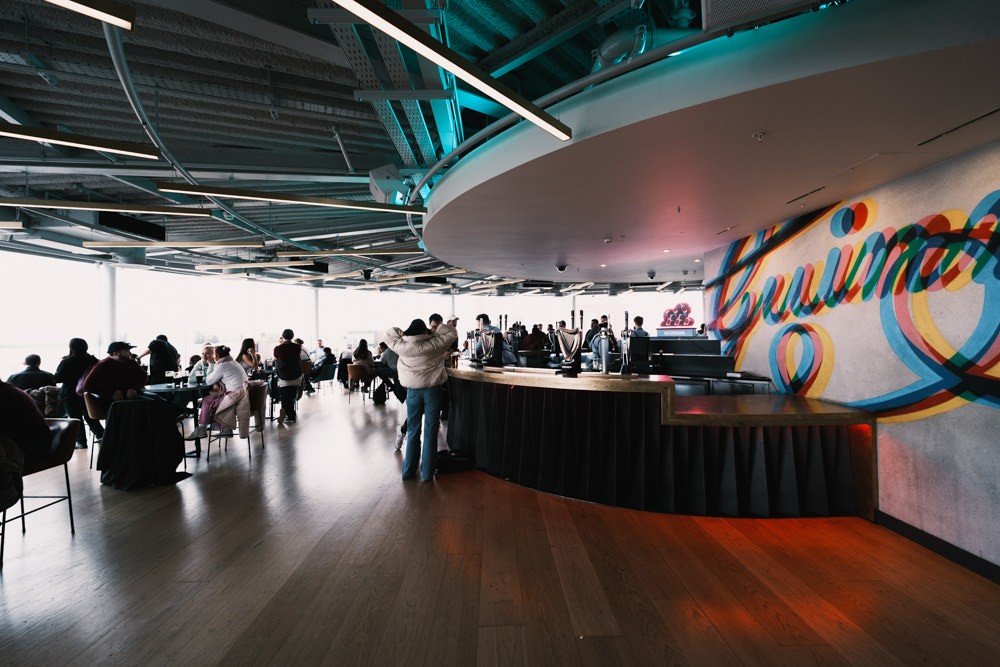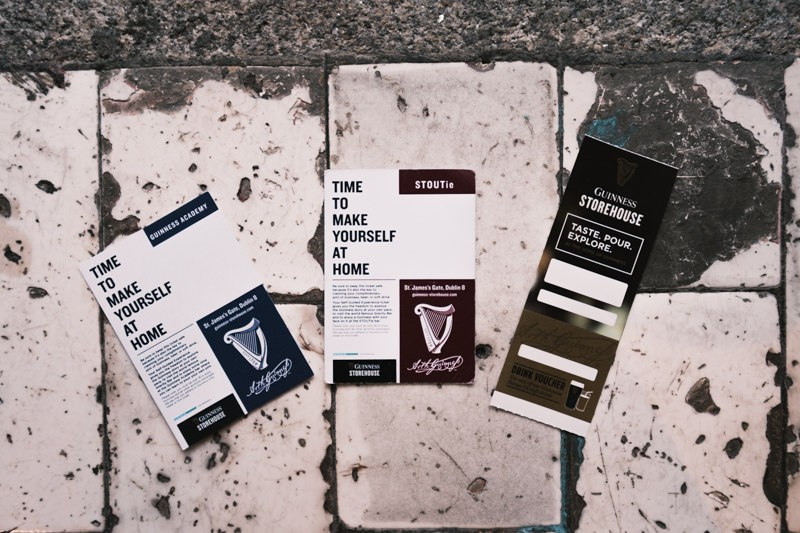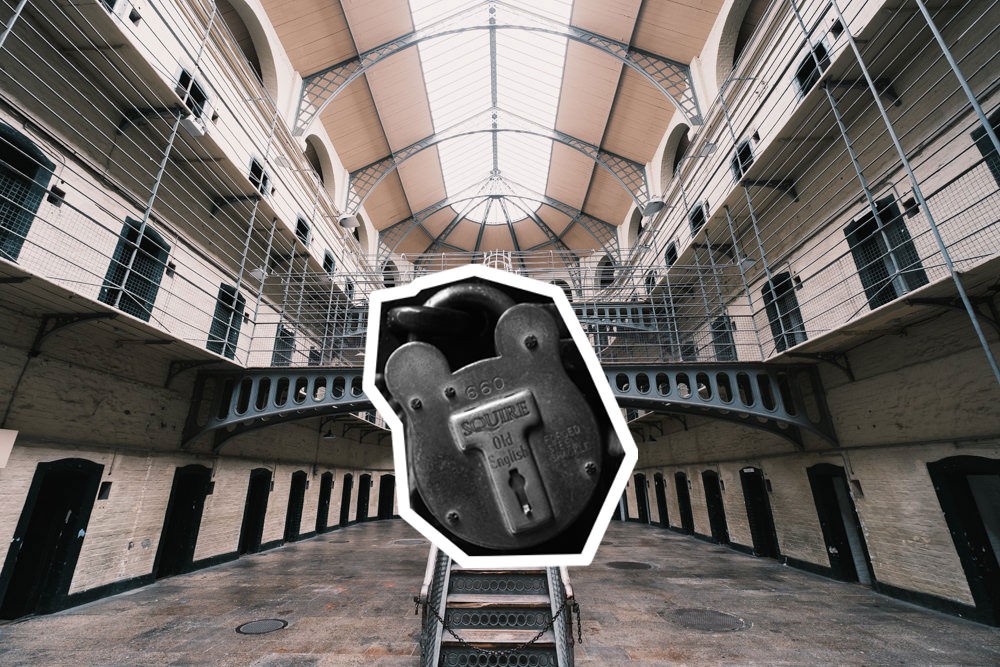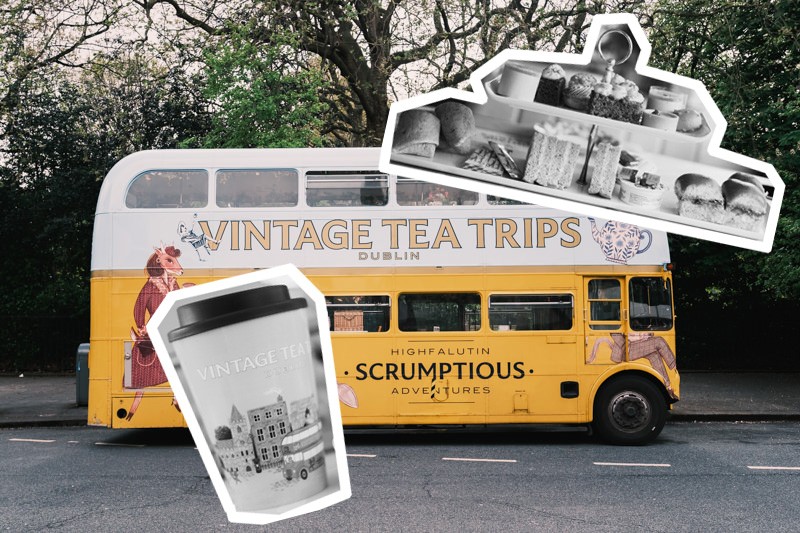Review: Yes! The Guinness Storehouse Experience Is Worth Visiting
Review: Yes! The Guinness Storehouse Experience Is Worth Visiting
There’s something both absurd and satisfying about drinking your own face off the top of a pint of Guinness. The STOUTie (a play on ‘stout’ and ‘selfie’) is something you have to do at the equally absurd and satisfying Guinness Storehouse in Dublin. I say ‘absurd’ in the most positive way. I mean this place is not a typical brewery or a museum.
It’s an immersive playground for visitors interested in the stories, science, and everything else about Ireland’s darling beer. From the moment you ascend that first neon-lit escalator, you’re pulled into a seven-floor journey through scent, taste, history, and branding.
The Guinness Storehouse is probably the most popular activity in Dublin and I can understand why.
Never Sip A Guinness
“Don’t sip. The first drink should go down to the top of the Guinness logo.” The bartender explains that if you take a sip, you’re just getting the bitter part of the foam without the smooth, velvety creaminess of the beer itself.
He was right. But what made this pint so good? Was it because my face was on it? Was it just because I’m drinking it fresh from the factory itself?
Maybe. But he think it’s the 300 million nitrogen bubbles that you’ll find in every pint of Guinness. And that was just one of many things I didn’t know about the stout beer until visiting the famous Guinness Storehouse.
The Guinness Storehouse Experience
1759. Arthur Guinness signs a 9,000-year lease agreeing to pay £45 per year to secure the four-acre site at St. James’s Gate, that would become the most iconic brewery in the world. He really believed in this product or just couldn’t pass up a good deal. Commitment was definitely not an issue for this man.
In brewing terms, ‘to store’ means to ‘add yeast.’ The Storehouse was built between 1900 and 1904 to house the fermentation process of the brewery. Today, it is a 7-floor interactive walkthrough of Guinness’ nearly 200 year history.
From the moment you take the escalator up to the neon-lit ground floor, you know you’re in for something different. Every floor features a different part of the Guinness story from the ingredients, brewing secrets, people, culture, and yes, even the marketing genius that has made the brand what it is today.
The walkthrough is a sensory feast. For starters, there’s a barley field under a digital sky, a waterfall room that celebrates the water sourced from the Wicklow Mountains, and even a mysterious room where you can experience the individual aromas of barley and hops through scented pillars.
A cinema plays their celebrated vintage ads amidst old machinery, barrels and mash tanks. A sci-fi lab like tasting room opens into an old-fashioned parlor where you learn how to properly taste a Guinness. And all that’s just midway through the experience.
And of course restaurants and bars, where you can relax for a pint in between before finishing at the lauded Gravity Bar, where you get panoramic views of Dublin with the pint that’s included with your entrance ticket.
But to understand what makes Guinness different from any other beer, you need to go back to the start.
If you’re visiting Dublin for the first time, bookmark my IN-DEPTH CURATED RECOMMENDATIONS + THINGS TO AVOID.
A Start To Finish Brew With Just Four Ingredients
Barley. Water. Hops. Yeast. That’s it. Each one has its own journey before it even touches a glass.
The barley is where the transformation begins. It’s roasted to precise temperatures to create that deep, coffee-like flavor that defines Guinness. At 0°C, it starts out pale and grainy. By the time it hits 190°C, it begins to crystallize. It smells sweet and a little nutty. At 225°C, the barley turns dark and brittle. But it’s not ready until it hits 232°C. That’s when the real magic happens. Roasted barley, chocolate, coffee, a touch of bitterness. Any less and you lose the soul of Guinness, any more and it starts to burn and become too bitter.
Once roasted, the grains are milled to release the inner starch. That becomes grist. The grist is then mashed with hot water to create a thick porridge known as mash. This is where the enzymes start to convert the starches into fermentable sugars. You’re left with a sweet liquid called wort. Still following?
The wort is moved into giant kettles where it’s boiled and hops are added. This is where bitterness is introduced, balancing the sweetness of the malt. Hops also help preserve the beer. The copper kettles used in the 1800s could hold up to 172,800 pints of wort. Back then, they were heated over peat fires and scrubbed by hand using cinders. Science was already meeting tradition, and things were only getting started.
From Fermentation to That Perfect Pour
Once the wort is cooled, it meets the most important part of the process: the Guinness yeast.
Stored in liquid nitrogen at -196°C, Guinness’ yeast is one of the brewery’s best kept secrets.
The exact strain has been used since 1903. The master is stored cryogenically under lock and key to preserve it for future generations to come.
The yeast turns sugars into alcohol and carbon dioxide. That’s the foundation of fermentation. In the early days, this was done in massive wooden vessels. Eventually, Guinness moved to sterile stainless steel tanks, and at one point, they held the largest fermentation tun in the world. It could hold 2.3 million pints.
So many numbers, but the Guinness Storehouse presents it in an easy to understand and absorb way with its varying displays and interactive visuals.
Temperature during fermentation is critical. Too cold and the yeast goes dormant. Too warm and it produces strange flavors. It’s a delicate balance managed entirely by the brewer’s eye and instinct.
But even then, the beer isn’t ready. It matures. It clarifies. And then, the final step.
What Would Guinness Be Without Nitrogen?
This is where Guinness stands alone. In 1959, Guinness became the first brewer to use nitrogen in beer. Unlike carbon dioxide, nitrogen creates tiny, uniform bubbles. It gives the beer its thick, creamy head. That smooth, cascading pour. The ‘surge and settle’ you see in every proper pint. It’s also what makes Guinness taste less fizzy and more silky.
It takes 300 million nitrogen bubbles to create that effect in a single pint.
And that’s why you never sip a Guinness. You gulp and let it coat your tongue and settle on your palate. Let the nitrogen do its thing.
The STOUTie and Guinness Academy
At the STOUTie station, a machine takes your photo and prints it perfectly over the layered foam, a few slow passes that somehow turns nitrogen and stout into a creamy self-portrait. In awe, I was standing there, pint in hand, trying to decide if it was too weird to take a selfie with a beer that already a selfie of my face on it. It was not. Everyone was doing it too.
For an extra €8 (less than what you’d pay in Temple Bar), you get this one of a kind pint that I recommend everyone do.
Next, I headed over to the Guinness Academy to learn how to pour my own pint. Yes, there’s a proper way to get just the right amount of foam head that requires pouring in two parts.
How To Pour A Proper Pint Of Guinness
- Start with a clean and dry Guinness glass. The name and harp logo is not just decorative.
- Tilt the glass at a 45-degree angle and pull the tap forward to start a slow controlled pour.
- When the beer reaches the bottom of the harp logo, tilt the glass upwards and fill until the beer reaches the top of the harp.
- Let the beer rest for 90 seconds. This part is important and fun to watch as the beer start to slowly settle beneath the foam.
- Pull the tap backwards and gently fill the rest of the glass until the foam domes over the rim.
Do it right and you get a certificate and probably the best pint of Guinness you’ll ever have (after the STOUTie) because you poured it yourself. Right?
Pint With A View At The Gravity Bar
From there, head to the Gravity Bar. It’s the highest point in the building and gives you a full 360-degree view of Dublin. On a clear day, you can see as far as the Wicklow Mountains, where the water comes from. But realistically, this is Ireland and you’re probably going to have cloudy weather 350 days a year.
Still, it is a spectacular space and if you’re already had one too many Guinness draughts by the time you reach the bar, opt for the Hop House 13 lager or *gasp* non-alcoholic Guinness 0,0. Apparently, it tastes just like a normal Guinness.
Final Thoughts And Ticket Information
The Guinness Storehouse was a delightful surprise. I honestly expected something of a tourist trap, but instead, I ended up spending 3 hours hear devouring all the interesting facts and vintage materials about the legacy of Arthur Guinness.
They recommend 90 minutes, but you can easily spend more time here.
Most importantly, I’ve settled a long-standing question of whether Guinness better in Ireland. It absolutely does.
Personally, I think it’s worth visiting even if you’re not a Guinness drinker. Especially if you’re not. Because by the end, you just might be.
Timed entry slots including a free pint and tasting can be booked here for €30. The Guinness Storehouse is also covered with the Dublin Pass. It’s worth it if you’re also visiting the Jameson Distillery, the Little Museum of Dublin, or doing the Hop-On Hop-Off Bus.
Slots do sell out, so book at least a few days ahead of time. The place stays open for a couple of hours after the last entrance, but I’d suggest going a bit earlier in the day, just after noon.
If you want more unique or private, they also have the Connoisseur Experience. Or you can do a combo guided tour that covers the Guinness Storehouse and Jameson Distillery together.
Updated on May 14, 2025






